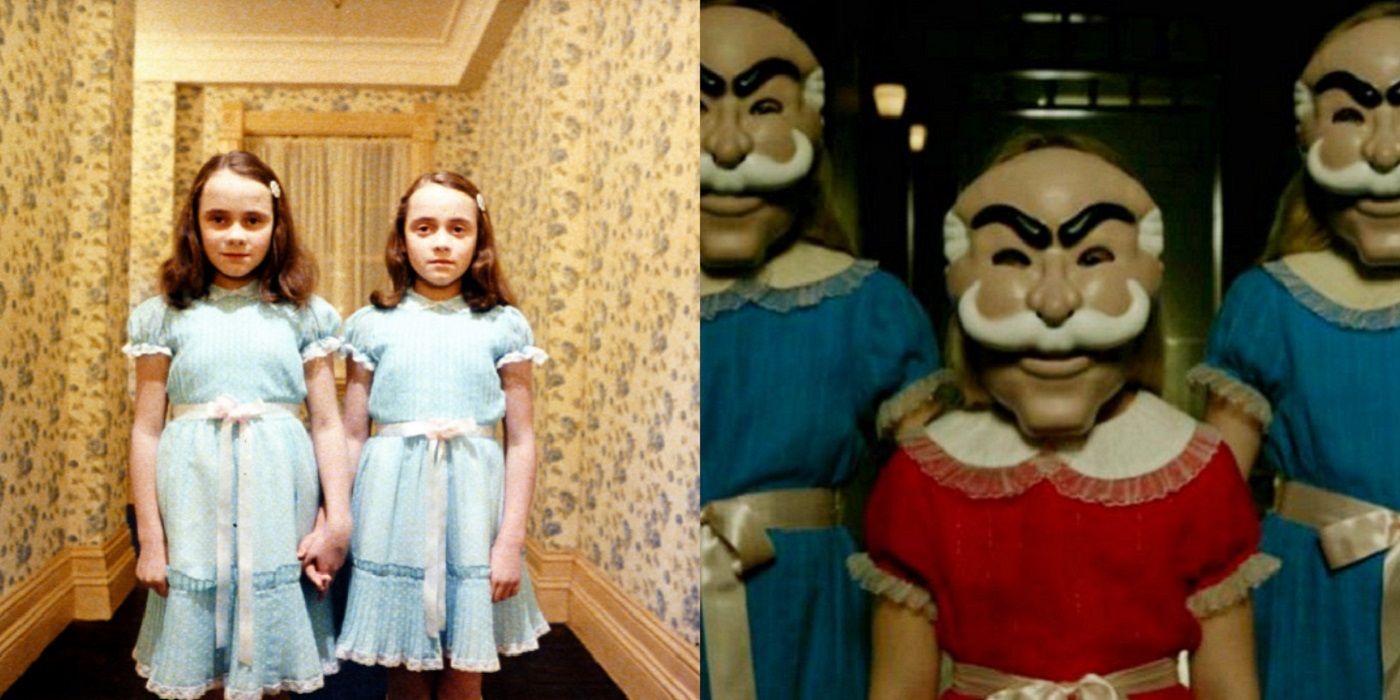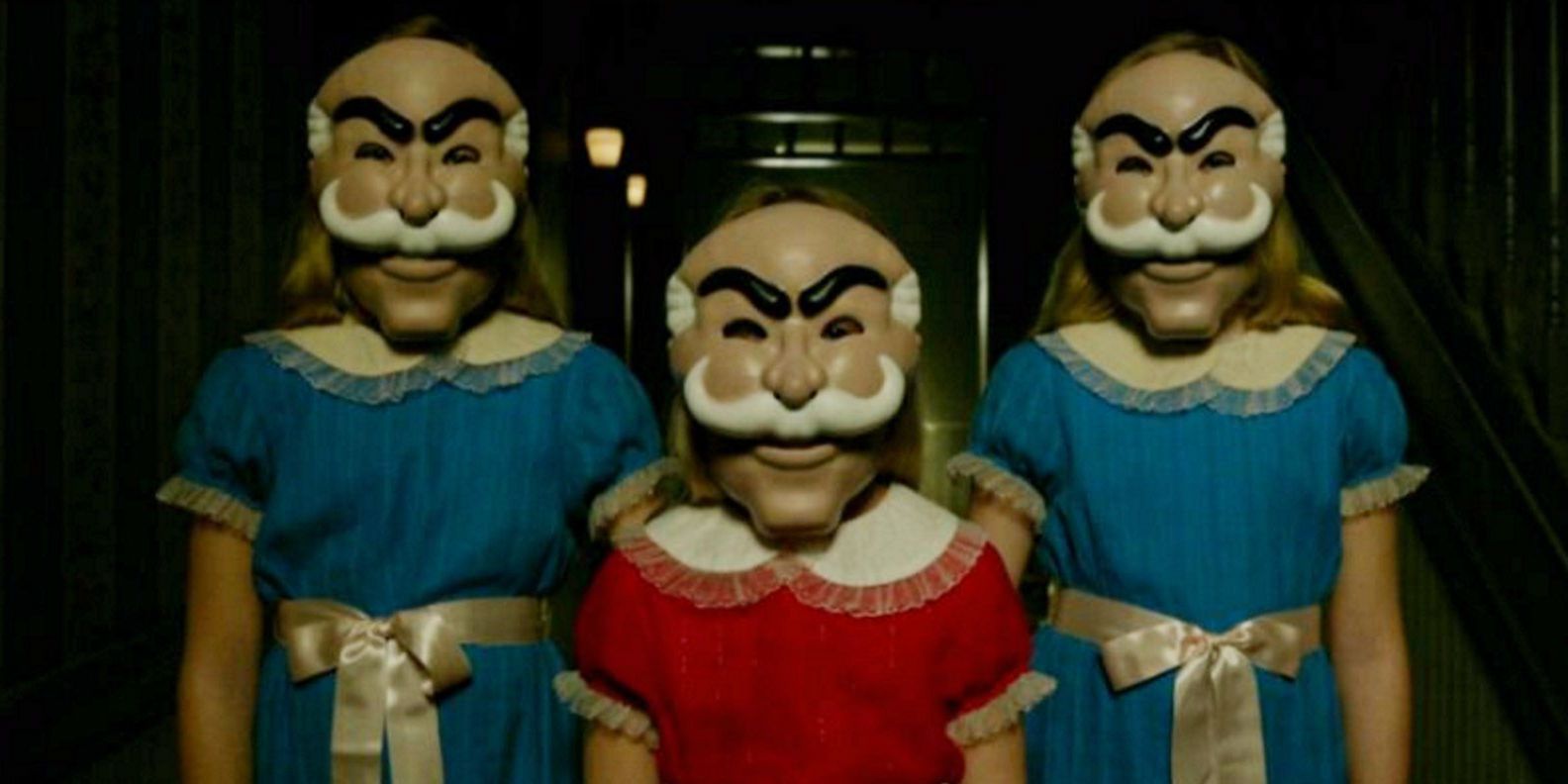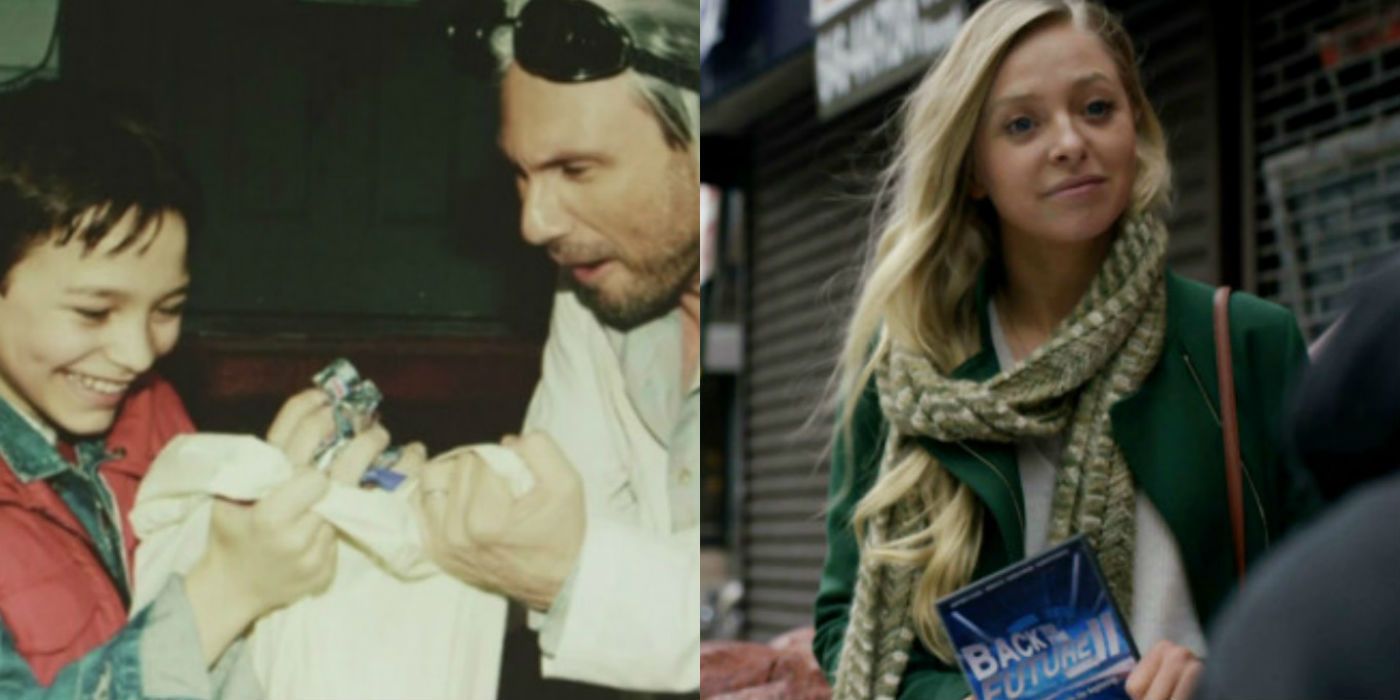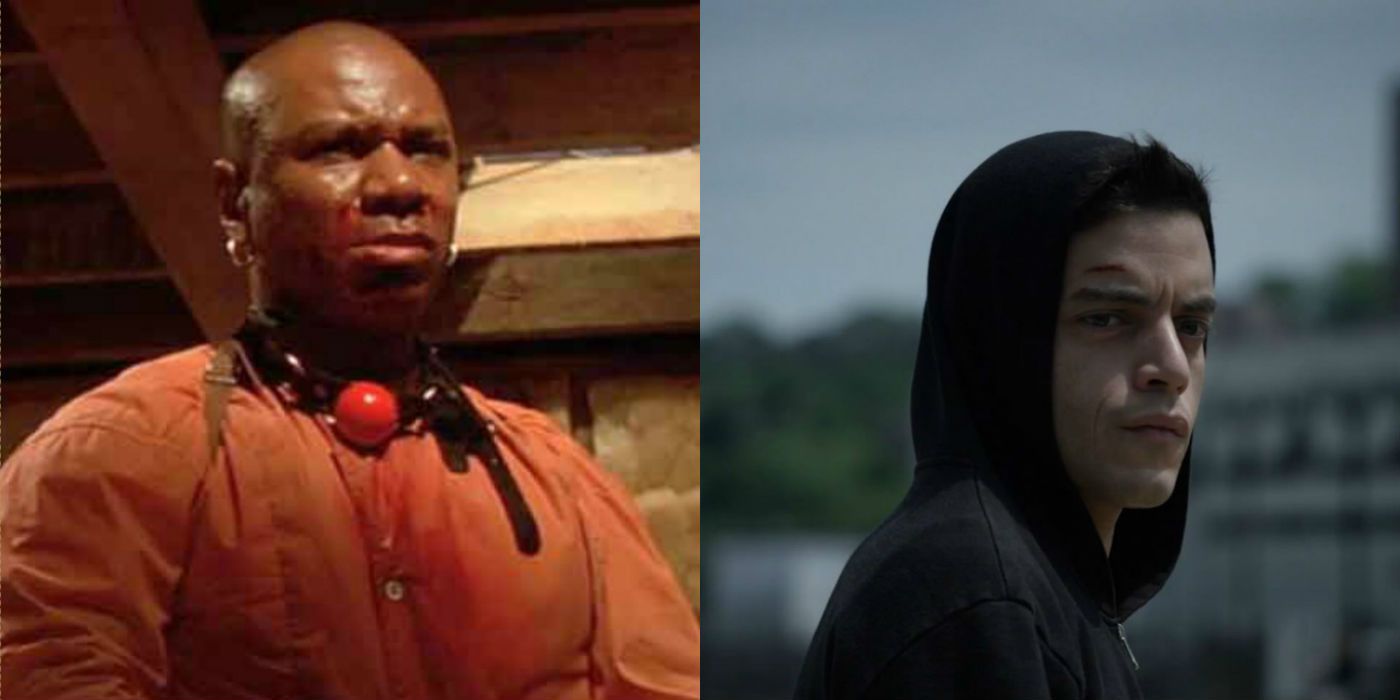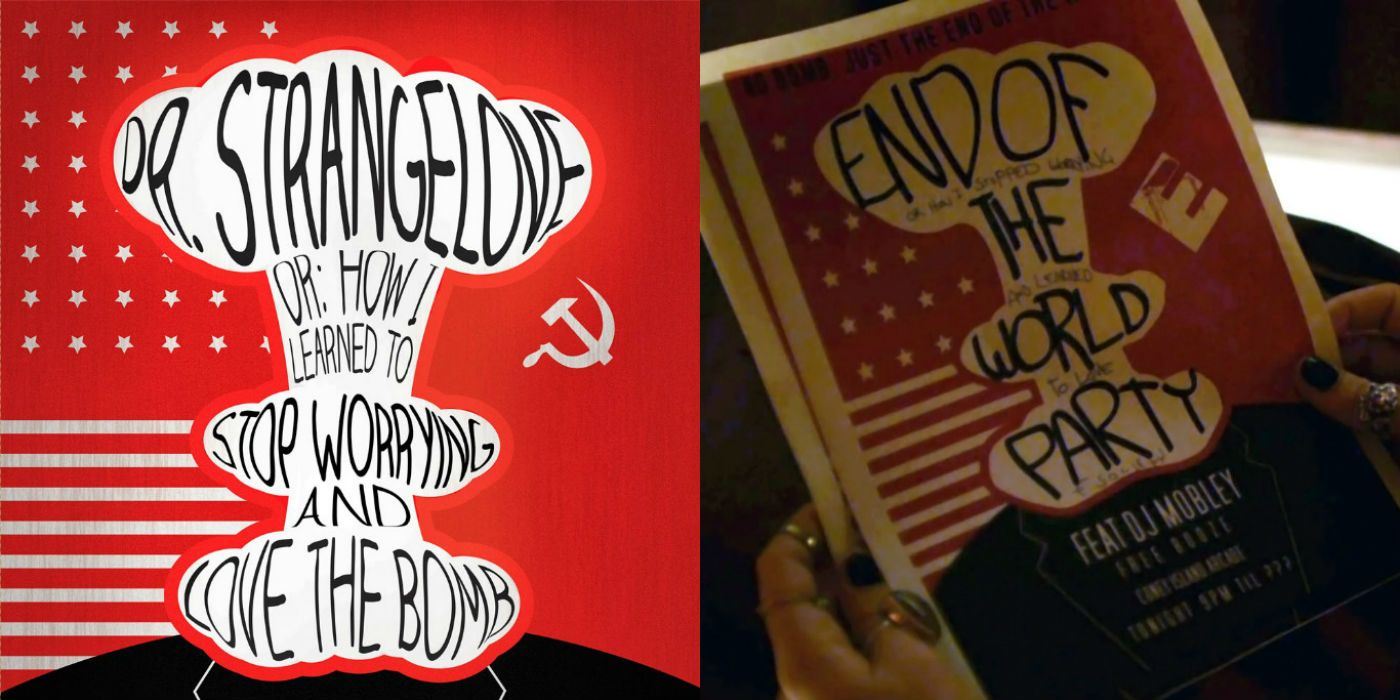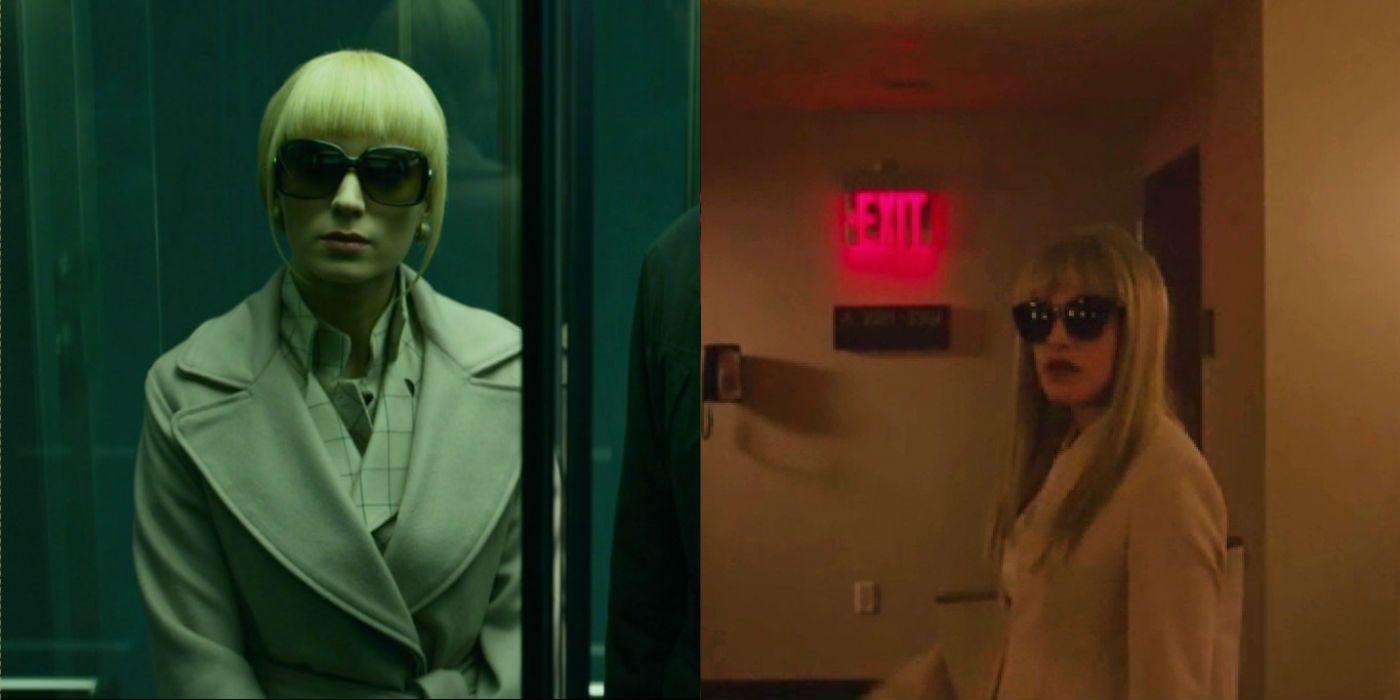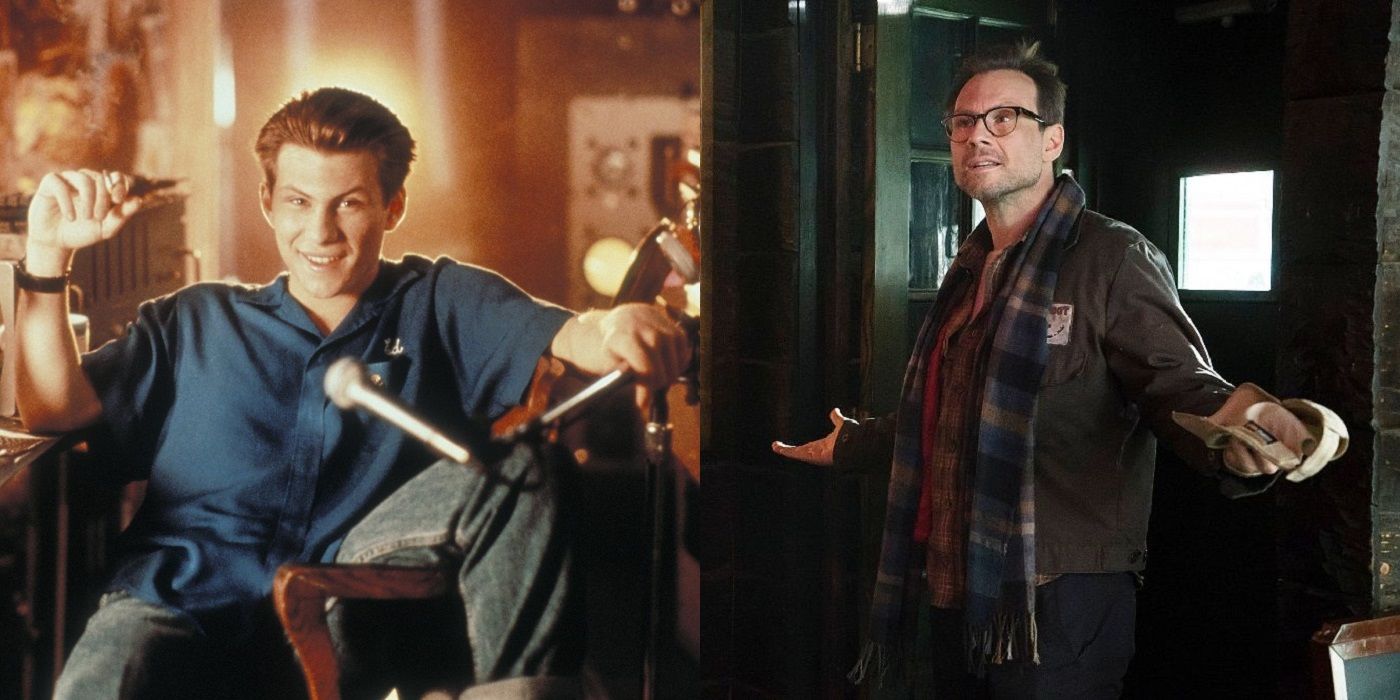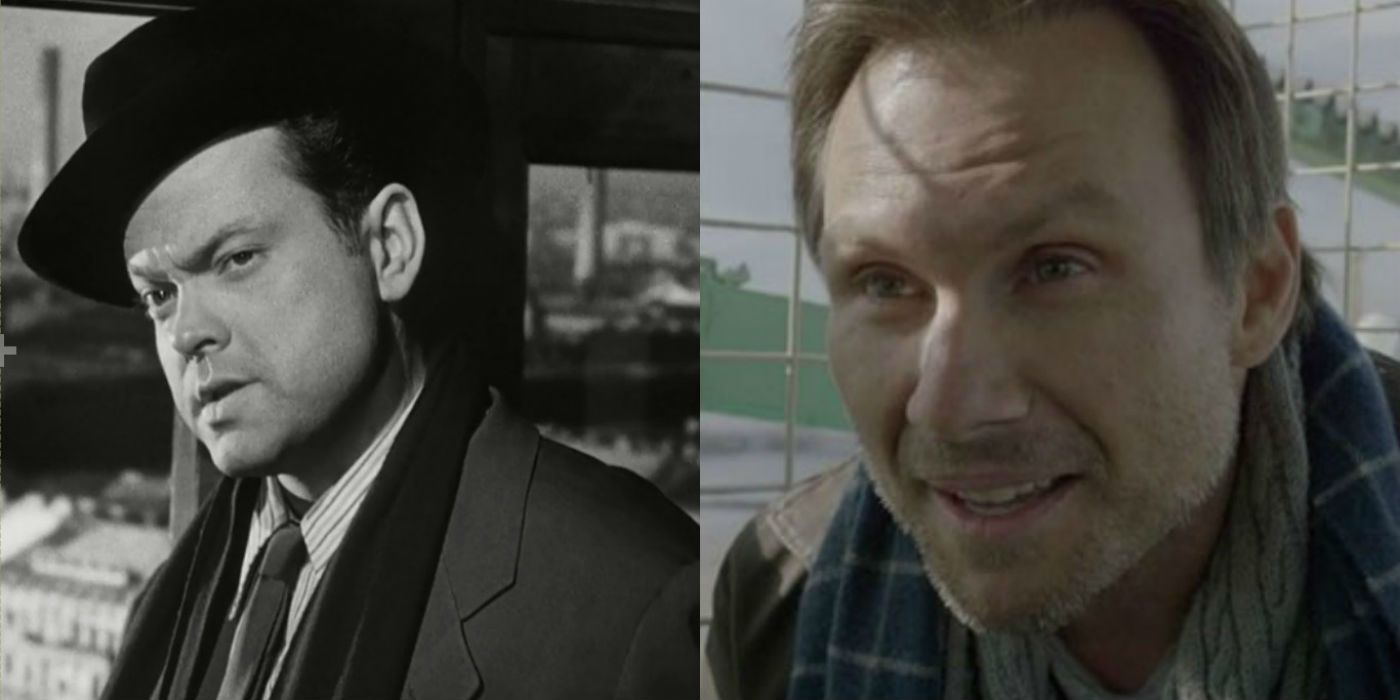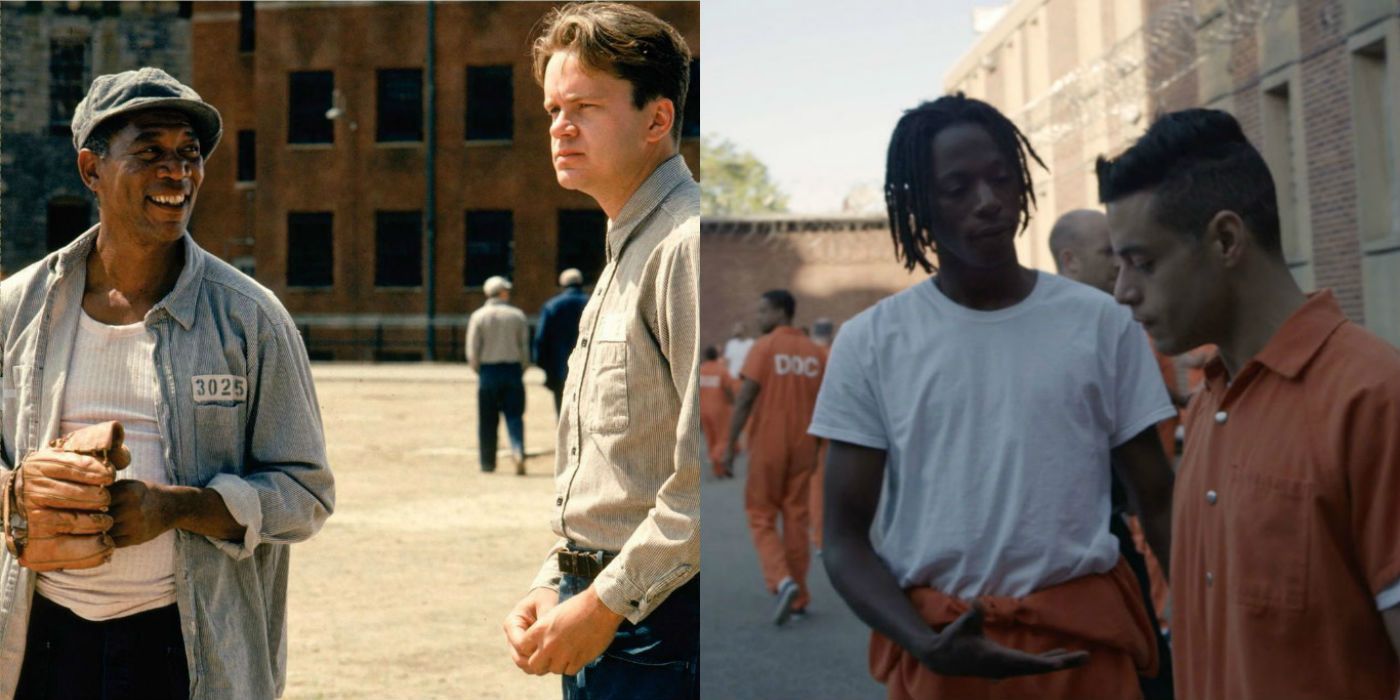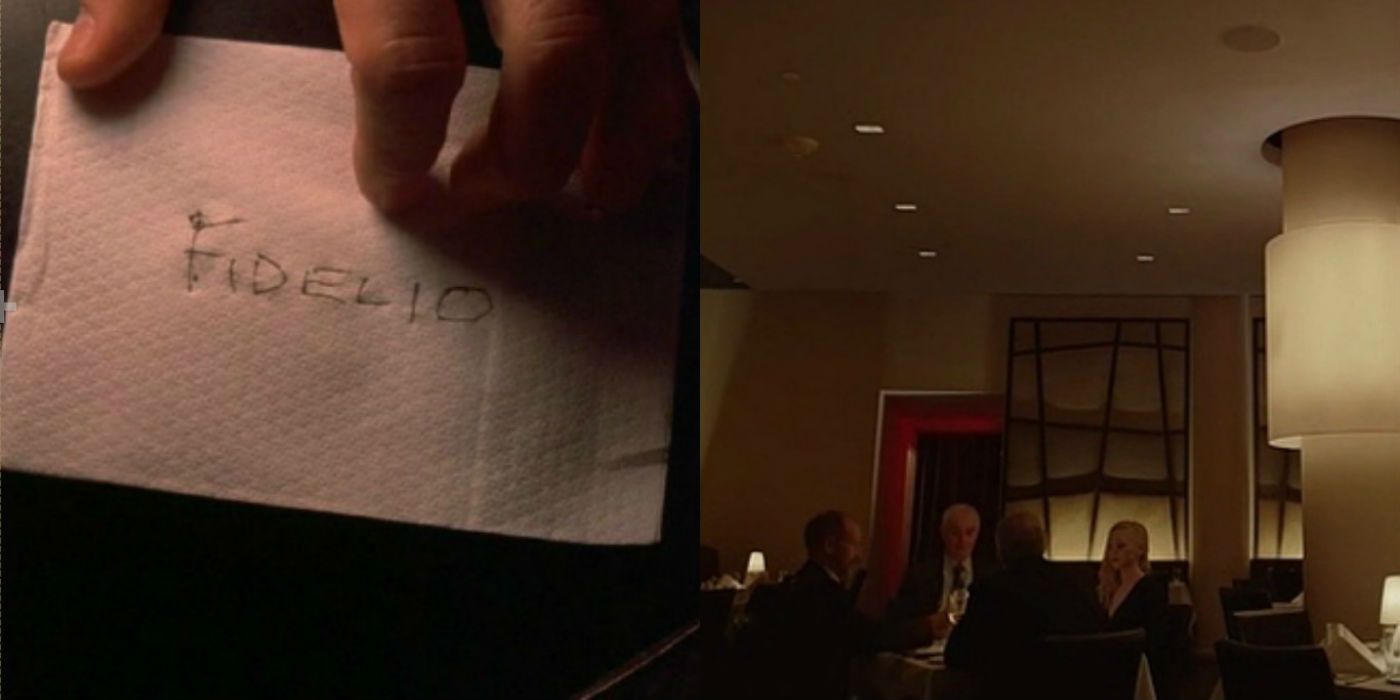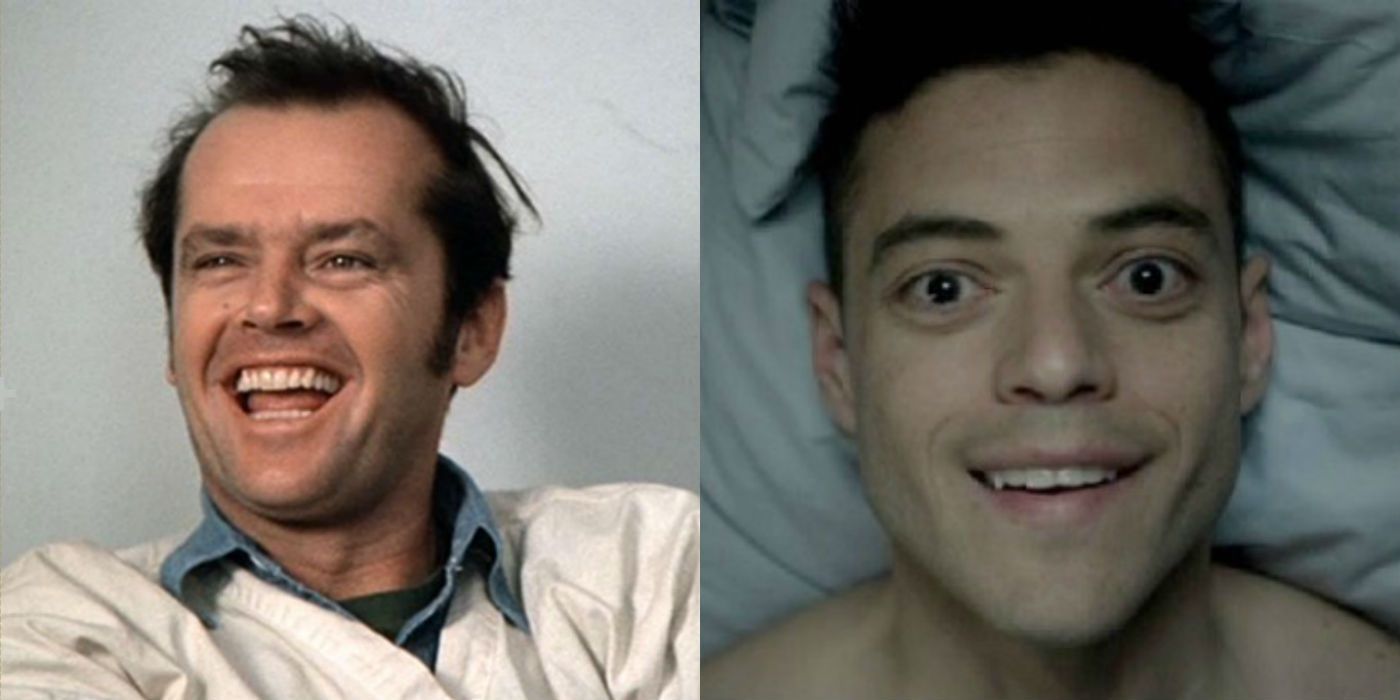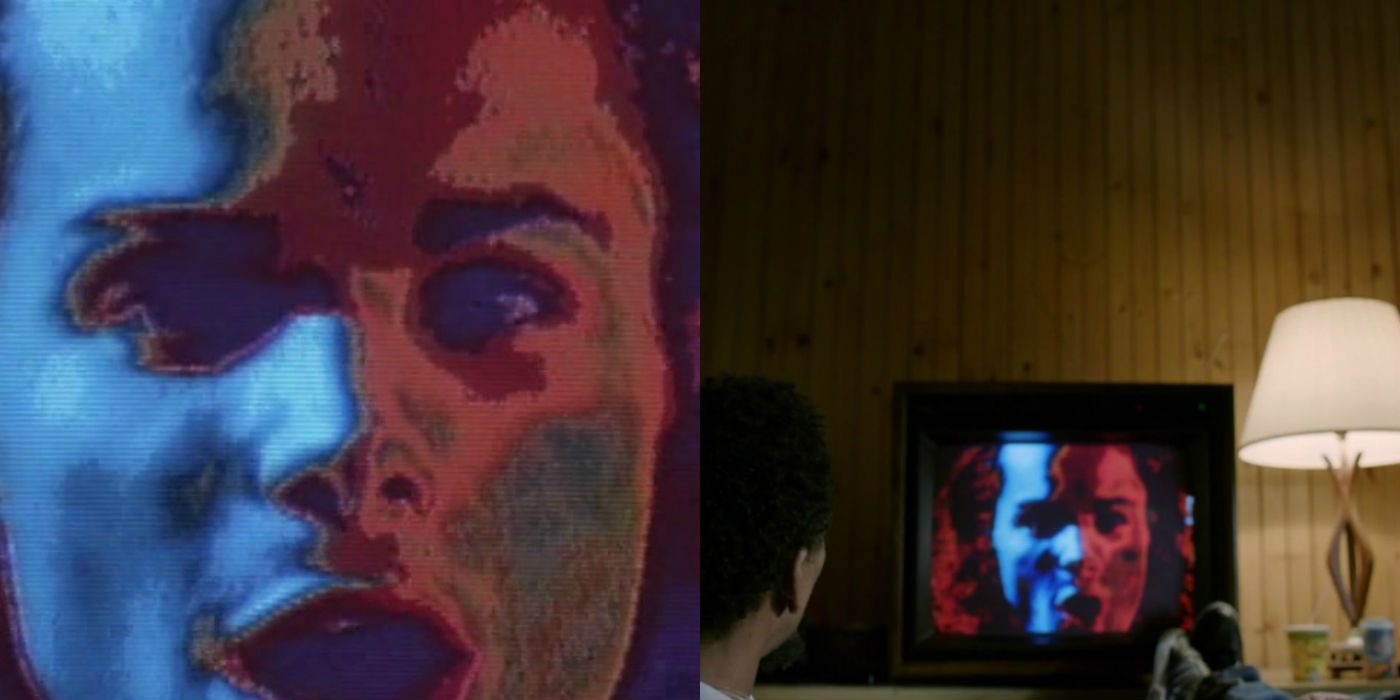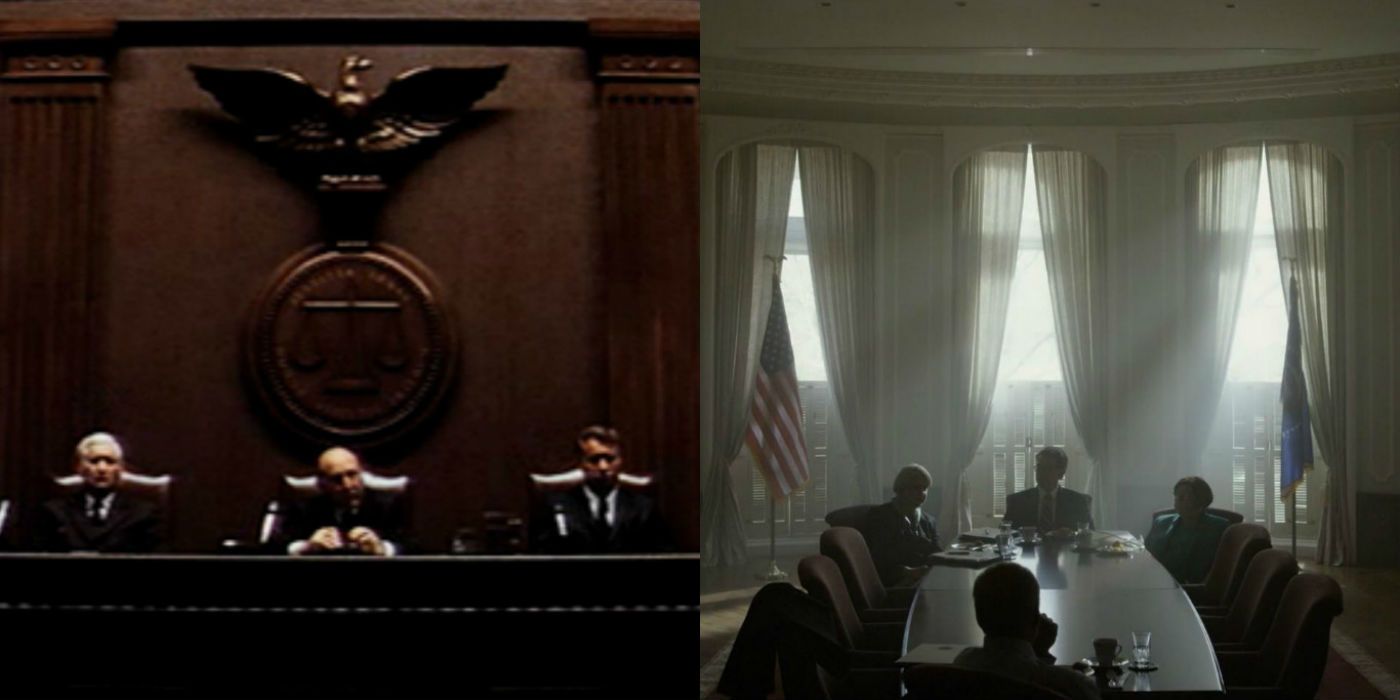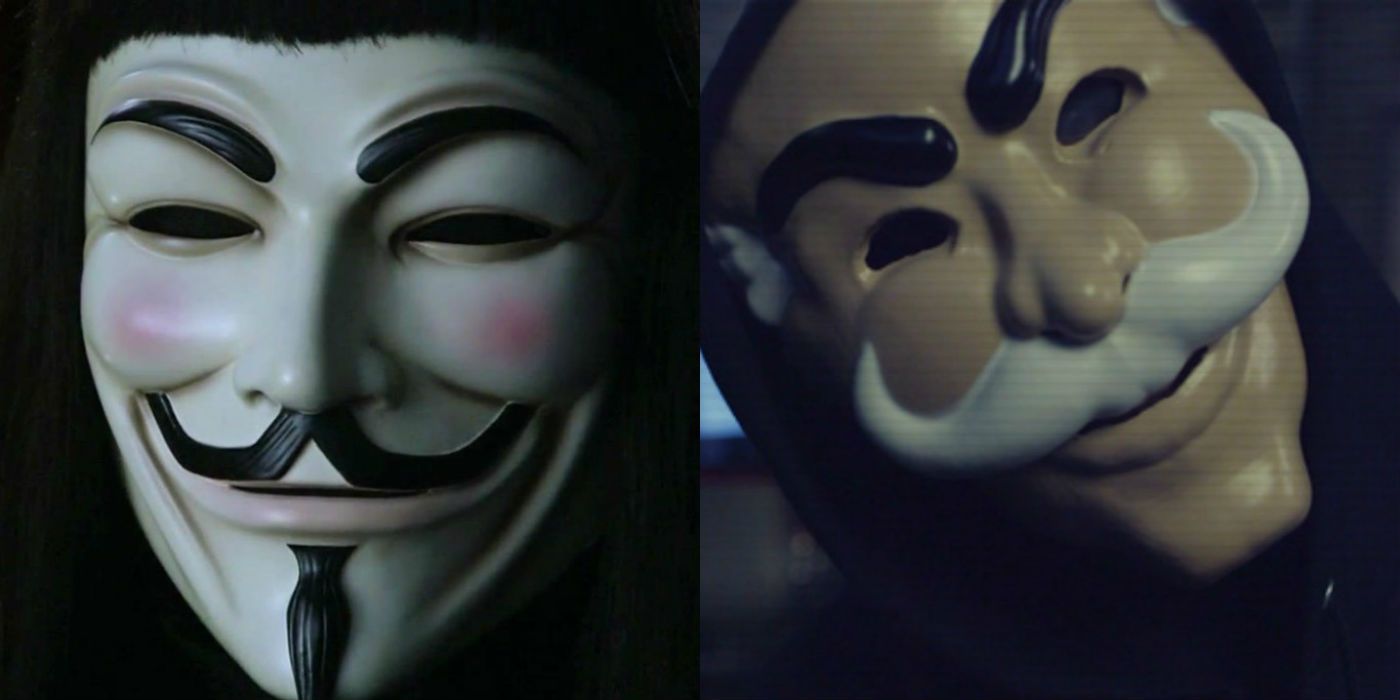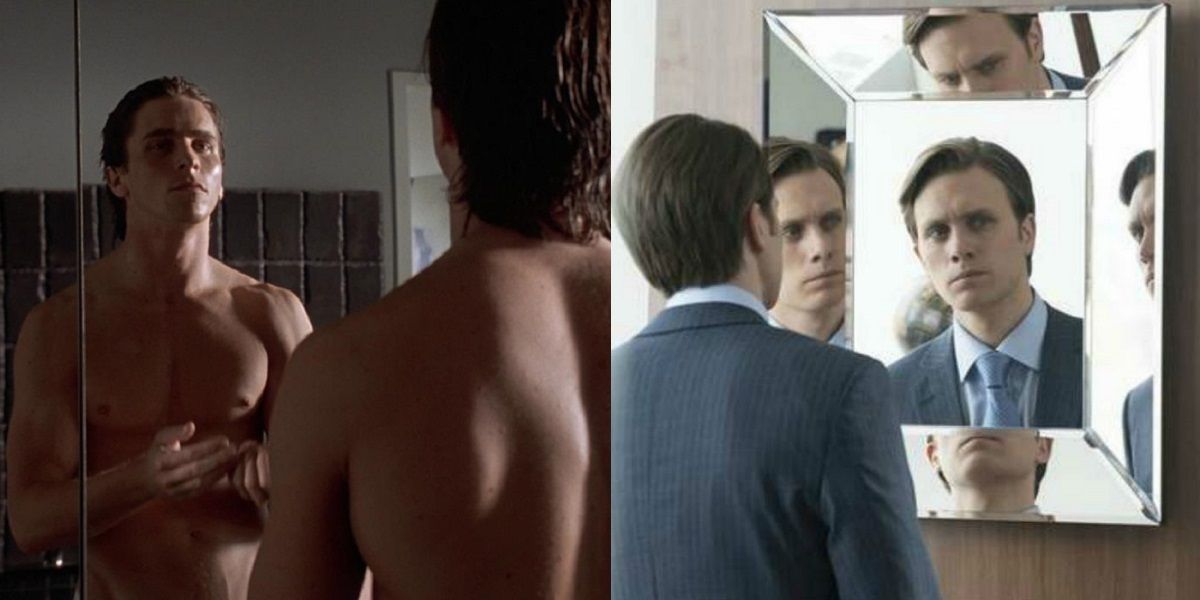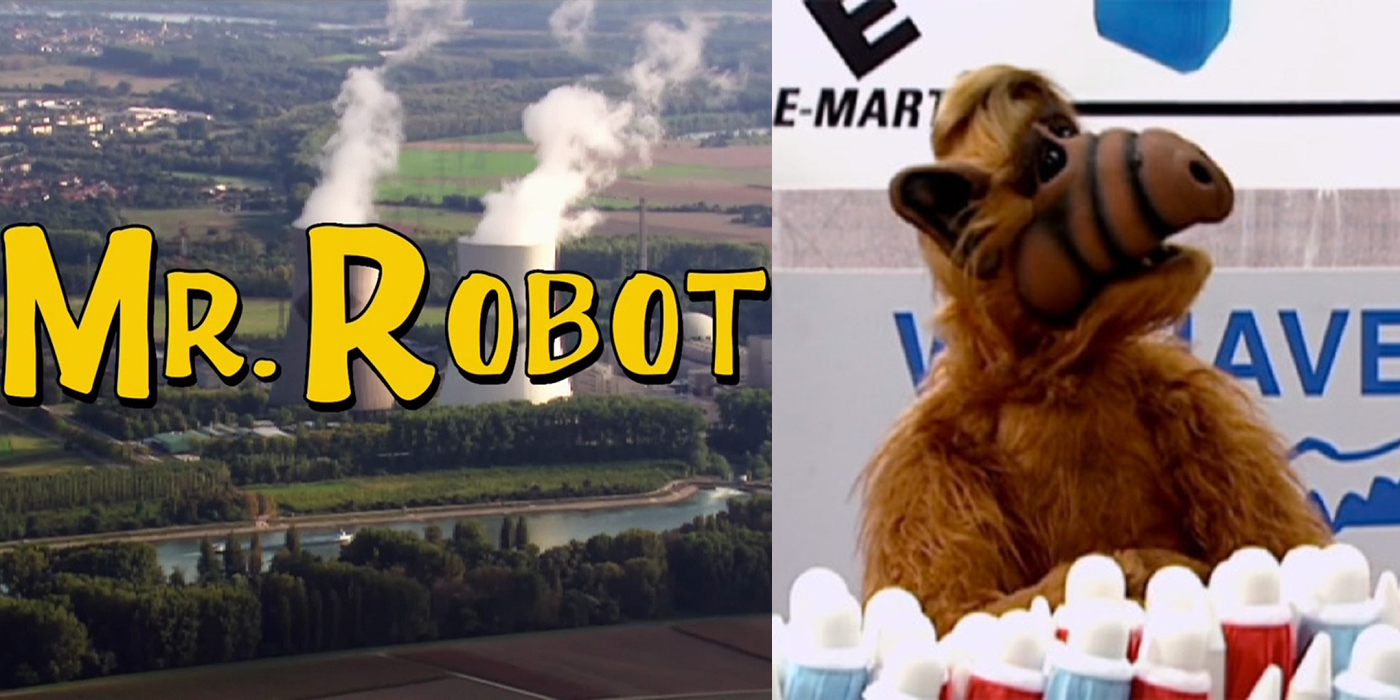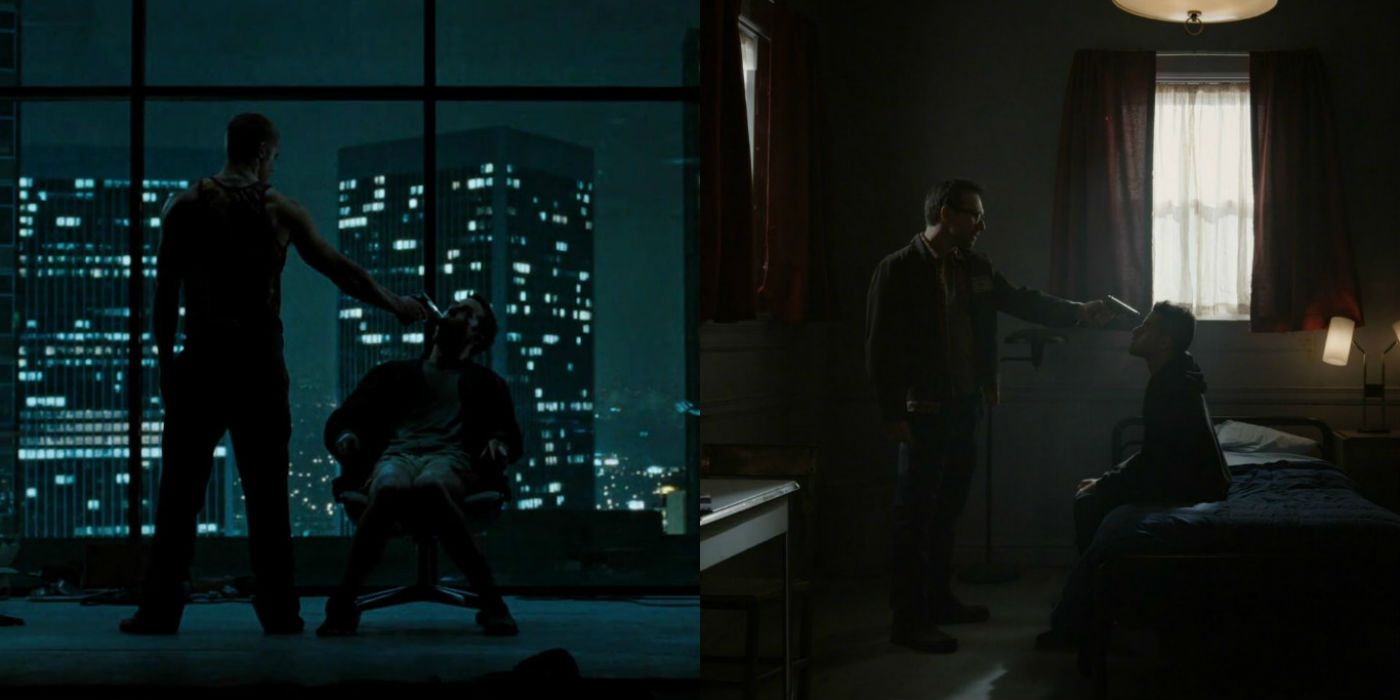From its very first episode, Mr. Robot has established itself as one of the most thrilling shows on television. The story of Elliot, an isolated hacker who forms a secret society in an effort to take down an evil corporation, it's a fresh-feeling and challenging show, if not wholly original. Mr. Robot is rife with references to films, either through quotes, visual or musical homages, or allusions in dialogue.
The movie references in Mr. Robot work on two fronts. They are both homages to the cinematic influences on the show’s 3--year-old creator, Sam Esmail, and a reflection of the very real impact that those same films would inevitably have had on the show’s cast of characters.
Because the show is framed through Elliot’s unreliable narration, it exists in a world informed by his cultural influences. What 25 year old guy didn’t watch Fight Club or American Psycho ad nauseum as a teenager? Add in Elliot’s mental imbalance and delusions, and you’ve created a fantastic, paranoia world rife with references to movies he has probably illegally downloaded.
Rather than crumbling under the influences of the stories that came before his own, Esmail masterfully employs them as tools to enrich Elliot’s story. Let's take a look at Every Movie Reference In Mr. Robot.
15. Back to the Future (1985)
In season one, Angela arrived at Elliot's place with an offer to get high and watch his favorite movie: Back to the Future II. We also caught a glimpse of a young Elliot and his father dressed up as Marty and Doc from that same series. Season two's penultimate episode, which follows the diverging stories of Elliot and Angela, was riddled with songs from the Back to the Future soundtrack.
In season two, episode ten, Angela told Elliot she was turning herself in for her involvement in their hacking schemes. She said, resignedly, "It's a long way from getting high and watching Back to the Future II."
Sure enough, the next time we see Angela, she wakes up in the back of a van as songs from Back to the Future play on the radio. Elliot is reunited with an accomplice he was sure he'd killed and the two walk off into the sunset together as an instrumental of "Earth Angel", the love theme from Back to the Future, plays. Turns out that they're not so far away after all.
14. Pulp Fiction (1994)
Season one, episode nine opens wth a flashback featuring Elliot and his father in his father’s computer repair store (which is not-so-coincidentally called "Mr. Robot"). The scene caps off with Elliot asking his father to take him to see Pulp Fiction in theaters. It makes total sense that Elliot and his father would have gone to see Pulp Fiction together in the mid-‘90s and, considering what we know about Edward Alderson’s future, it’s conceivable that this outing was one of Elliot’s last happy memories of his father.
That’s why, later in the episode, when Elliot’s childhood friend Angela asks how he’s doing after discovering that he’s manifested an alternate personality who resembles his dead father, Elliot replies, “I think I’m pretty f—ing far from okay.” This, of course, is a direct quote from Pulp Fiction. It’s Marsellus Wallace’s dry response to Butch’s inquiry about how he’s doing after taking revenge on the man who just assaulted him.
This is a perfect example of how Esmail uses Elliot’s very real-feeling pop cultural influences to foreshadow his own homages. In classic Esmail fashion, Elliot retools a childhood pop culture memory associated with his father to sum up how completely out of control things are. It speaks to the hold Edward Alderson has over his son, even from beyond the grave.
13. Dr. Strangelove (1964)
Stanley Kubrick’s films are the clearest overall stylistic influence on Mr. Robot. Esmail’s confident framing, striking cuts, and bold use of music are proof positive that the show owes a debt of gratitude to Kubrick. Mr. Robot repays that debt in the only way it can — through rampant homages.
The poster advertising the “End of the World” party that fsociety throws after their successful hack is an obvious shout-out to the poster for Kubrick’s Dr. Strangelove or: How I Learned to Stop Worrying and Love the Bomb. Upon closer inspection, a scrawled subtitle is even visible on the poster: “Or how I stopped worrying and learned to love society”. The reference here is more surface-level than the other Kubrick homages on this list. Kubrick's apocalyptic black comedy does have a few elements in common with Mr. Robot — its fatalism and its sharp critique of the government — but this poster is really part of Esmail's broader acknowledgement of the influence Kubrick has had on the show.
12. The Girl With The Dragon Tattoo (2012)
During Darlene and Angela's spy mission in season two, episode six, Darlene wears a blonde wig with blunt bangs, oversized sunglasses, and a cream-colored outfit. She disguises herself as a wealthy, UES-type woman to sneak into a hotel and get a vantage point. The disguise is incredibly similar to the one that Lisbeth Salander wears in the American adaptation of The Girl with the Dragon Tattoo, when she is using the hacked bank codes from a corrupt business to rob them. This is an ideal disguise for the revolutionary-minded, anti-establishment Darlene. With her grungy style, bad attitude, and love of hacking, Lisbeth Salander makes perfect sense as a character Darlene would want to emulate.
Salander’s world is also imbued with the same creeping sense of paranoia as Darlene’s. Their cities are seemingly empty, but filled with prying eyes. They constantly feel at risk and alone, despite the efforts of those around them to reach out. Plus, they both thirst for revenge. Salander and Darlene are true kindred spirits.
11. Pump Up The Volume (1990)
More of an inside joke than a genuine reference, season two, episode three of Mr. Robot features a shout-out to an early performance by Mr. Robot himself, Christian Slater. In our introduction to FBI agent Dom DiPierro, we see her chatting online with someone who goes by the handle “happyhardonhenry”. This is an oblique reference to “Happy Harry Hard-On”, the pseudonym of Slater’s teen shock-jockey character in the 1990 dramedy, Pump Up The Volume.
In the film, Slater plays Mark Hunter, a high-school student who is isolated and frustrated with the status quo and chooses to reach out anonymously through a pirate radio station. He takes on the name “Happy Harry Hard-On” and uses his outlet to try to oust those in power — in his case, the principal and teachers — until he’s finally discovered and arrested. So besides being a sly reference to Slater’s teen heartthrob days, the film’s message and hero are actually remarkably similar to Mr. Robot’s.
10. The Third Man (1949)
In the series pilot, Mr. Robot and Elliot ride an empty Ferris wheel in an abandoned Coney Island. During the ride, Mr. Robot gives Elliot the pitch: join fsociety in its attempt to save the world by hacking the its biggest conglomerate, all while getting revenge against the corporation that poisoned his father. Or don’t. It’s not exactly the most promising pitch, but Esmail sets the scene in the cramped car of a moving Ferris wheel, giving it visual dynamism and adding tension. On top of that, it's a film reference.
A pivotal scene in Carol Reed’s film noir masterpiece The Third Man takes place on a Ferris wheel. Protagonist Martins (Joseph Cotton) and antagonist Lime (Orson Welles) have a fraught discussion on morality while they take a spin on Wiener Riesenrad, the famous Viennese Ferris wheel. Martins has discovered that Lime is selling diluted, black-market penicillin, not caring that it is severely harming children so long as he can make a buck. After trying to intimidate Martins, Lime offers him a job to buy his silence, not unlike E Corp hiring Angela in an attempt to prevent her from suing the company for her mother’s wrongful death.
9. The Shawshank Redemption (1994)
Mr. Robot’s season two “twist” revealed that Elliot had spent the season in prison for a hack unrelated to the fsociety take down. We’d already spent several episodes with Elliot’s Seinfeld-loving friend Leon, who met Elliot every day for lunch and hooked him up with Adderall when Elliot needed to stay awake. It turns out that, in reality, Leon was a fellow convict recruited by the Chinese hacker group The Dark Army to protect Elliot while he was in prison.
We see actual Elliot and Leon’s first meeting, where Leon says, “You’re the only guilty man in the entire pen.” Leon then gives Elliot a bunch of practical advice about surviving prison and finishes it off with, “I'm here to provide you with anything you may need. I can pretty much find anything, and I mean anything. Smokes, pills, hard sh—…”
This entire speech is a reference to a speech given by Red (Morgan Freeman) to Andy (Tim Robbins) in The Shawshank Redemption. Red, who refers to himself as the “only guilty man in Shawshank”, befriends Andy and informs him that Red’s “the guy who can get it for you. Cigarettes, a bag of reefer, if that's your thing…”
Like Red, Leon has shown himself to be a trustworthy ally, even single-handedly taking down a gang of cons who were attacking Elliot. But more than anything, this is a nod to the film that would’ve most likely formed Elliot's impression of life in prison.
8. Eyes Wide Shut (1999)
After fsociety successfully corrupts the credit card records of the biggest conglomerate in the world, cash gets a little tight. Credit is a thing of the past, and those who didn’t lose their savings are surviving on an allowance of $50-a-day cash withdrawals from the bank. Expensive restaurants now accept only cash, keeping them even more exclusive than before, and it’s at one such restaurant that Corp CEO Phillip Price takes Angela to meet two of the men who colluded to cover up the toxic waste leak that killed her mother.
The restaurant is called Fidelio’s, a reference to the password of the exclusive secret from Stanley Kubrick’s Eyes Wide Shut. The shots of the near empty Fidelio’s in Mr. Robot increase the sense of unease Angela feels at being manipulated into meeting the people responsible for her mother’s death. We've seen some shots of a mask-wearing dinner club in the series, so the Kubrick film is a clear reference point for Esmail.
Additionally, the password from Eyes Wide Shut is a reference to Beethoven’s opera Fidelio, the story of a wife who disguises herself and infiltrates the enemy to save her husband, not unlike Angela, who infiltrates E Corp to get justice for her mother.
7. One Flew Over the Cuckoo’s Nest (1975)
If anything is becoming Mr. Robot’s calling card, it might be twists that can be seen from a mile away. Was there a single viewer who didn’t predict that Elliot was somehow institutionalized during his oddly routine days spent totally removed from the central action of the season? For whatever reason, Esmail held off on the reveal that Elliot has actually been in prison all season until the end of the sixth episode. The execution of the reveal was brilliantly done, with a slow, clever camera transition from Elliot’s therapists office to his prison cell set to the theme music from Miloš Forman’s One Flew Over the Cuckoo’s Nest.
Probably the most well-known film about life in a mental institution, the classic 1975 movie stars Jack Nicholson as an unjustly committed man who starts a revolution among the mistreated patients. Unlike Elliot, Nicholson’s McMurphy is convinced he’s the lone sane man surrounded people who need his help. In using the film’s theme over the reveal that Elliot’s been “pretending” to be free all along to survive prison, and lying to the viewers in the process, Esmail subtly acknowledges his protagonist’s severe mental disturbance. It’s a chilling wink from the showrunner.
6. Hackers (1995)
While Elliot is detoxing from morphine in a cheap motel and spiralling into season one's surreal dream sequence, his fsociety teammates, Mobley and Romero, are watching the movie Hackers on a crappy TV. A cheesy, pre-Millenium take on cyber-culture, the movie is definitely a product of its time and has aged horribly. It doesn't accurately reflect hackers in the way that Mr. Robot attempts to, but it definitely affected the way that the average person perceived them.
When Hackers was released, the Internet was still very much a niche thing. We know that Edward Alderson owned the Mr. Robot shop around that time, so Elliot was exposed to the tools of the hacker trade. It's entirely conceivable that, as a pre-teen suffering the loss of his father, he strongly connected with the idea of hacking as presented in this movie, as much as he would deride it today. Esmail, as ever, is acknowledging the films that shaped him and that would have shaped Elliot too.
5. The Parallax View (1974)
In Mr. Robot, the governments of the world aren’t really in control. We see that the Dark Army’s head, Whiterose, is the Chinese Minister of Finance and the mega conglomerate E Corp has its hand in every governmental body in the States. In a scene from season two, E Corp CEO Phillip Price goes to Washington to advocate for a government bailout of his failing company, but a panel of government flunkies refuse. Price monologues about the flimsy trust people have in the American government, and makes it clear that he’s not going to take no for an answer as the score from The Parallax View swells.
Alan J. Pakula’s The Parallax View, a political thriller that has been largely forgotten in the wake of his more successful All The President’s Men, is about a reporter trying to unravel a conspiracy in which a major corporation, Parallax, is coordinating the assassinations of politicians. Its eerie score reinforces the film’s sense of paranoia and fatalism and it does the same in Mr. Robot, with the added impression that its use foreshadows some dastardly act by Price.
4. V For Vendetta (2006)
The masks worn by fsociety, though not identical, are a clear reference to the mask V wears in V for Vendetta. The Wachowskis’ adaptation of Alan Moore's classic graphic novel is about a vigilante who inspires revolution in a dystopia. Sound familiar? As V’s anti-government activities gain the support of the public, they put on the same masks and defy their oppressive government. In real life, the V masks have been taken on by the formless activist group Anonymous, who use them to protect their anonymity in “IRL” protests as they hack anyone they take umbrage with online.
Within the reality of Mr. Robot, the masks are an homage to The Careful Massacre of the Bourgeoisie, a fictional horror film Elliot and Darlene were obsessed with as children. Elliot doesn’t remember introducing the masks as fsociety’s public face, but he (as Mr. Robot) must have done so, proving how ingrained cinematic influences are in Elliot’s worldview.
3. American Psycho (2000)
The opening montage of season one, episode three introduces us to an unhinged young professional. He talks to himself in a mirror, he works out, he slaps himself in the face repeatedly. You know, just normal guy stuff. Tyrell Wellick seemed like he had it all together when Elliot meets him in the pilot, but this scene, strongly reminiscent of Patrick Bateman’s “morning routine” montage from Mary Harron's American Psycho, is our first hint that Tyrell isn't all he appears.
That impression is only reinforced by a later scene, where Tyrell carefully dons latex gloves and then pays a homeless man to let Tyrell release some tension by brutally beating him. Like Patrick Bateman, Tyrell is a wealthy white man with a cushy office job. He reaps the rewards and plays by the cutthroat rules of the 1%, but ultimately finds that life stifling and hollow. Tyrell makes good on this killer homage later in the season, when he strangles the wife of a professional rival. He may not be American, but he's definitely a psycho.
2. The Shining (1980)
Here we come to the shining example of Kubrick's influence on Mr. Robot. Elliot's dream life at the beginning of season two is gloomy and dark, visually punctuated by occasional bursts of the colors red and blue. He takes Adderall to stay awake (presumably to keep Mr. Robot from taking over) and scribbles frantically and repetitively in a notebook. As his mind begins to glitch from lack of sleep and Adderall abuse, Elliot hallucinates, in the hall of his mother's home, three girls in blue and red dresses wearing fsociety masks.
This is of course a reference to the twins who haunt the hallway of the Overlook Hotel in The Shining and beg Danny to play with them, and it's so explicit that it can only exist as a "thank you". Esmail is constantly including shout-outs to the films that shaped Mr. Robot's look and style -- peppered throughout the series are several sly references to Kubrick's Lolita as well -- but this is the most blatant one yet.
Honorable mention: '90s sitcoms (and ALF)
Though not actually a movie reference, season two, episode six is a veritable grab bag of ‘90s TV references as Elliot spends about 20 minutes of the episode in a cheesy sitcom-style dream sequence. The traditional Mr. Robot title card is replaced with a Full House-esque opening credits sequence, presented as part of “What’s Up Wednesdays” on USA Network. The fourth wall-breaking reference to the network that airs Mr. Robot is part-and-parcel with the narrative purpose of the dream sequence; in real life, Elliot is being severely beaten and Mr. Robot has sent him into this dream to shield him from the pain.
Despite Mr. Robot’s best efforts, the darkness of the real world starts to slip through into Elliot’s throwback refuge. The Alderson family road trip is set to a laugh track that howls over casual physical abuse at the hands of Elliot’s mother, and Tyrell Wellick, the man Elliot may or may not have killed, is tied up in the trunk of their car. The Aldersons hold up a convenience store, just because they can, and then ALF shows up, just because he can. It’s an entirely surreal and utterly upsetting demonstration of how toxic Elliot’s childhood memories actually are.
1. Fight Club (1999)
Since the pilot, viewers had been theorizing about Mr. Robot's true identity, predicting that he wasn't real or that he was Elliot's deceased father, so it came as no huge surprise when both those guesses were revealed to be correct in the first season’s penultimate episode. There are visual references to Fight Club as well, particularly in the quick-shot montage where we see Elliot throw himself off the pier that Mr. Robot had previously pushed him off of. Elliot attempts to fight Mr. Robot in a coffee shop, only to realize that all the other patrons are watching him choke himself. In season two, Mr. Robot holds a gun to his head in a manner mirroring Tyler threatening the Narrator during Fight Club's climax.
Obviously, the whole “imaginary friend/split personality who incites a secret society and a revolution” premise is something that is heavily influenced by Fight Club, but the season one reveal is topped off with a beautiful instrumental version of “Where is My Mind?” -- the ending music from Fight Club -- which plays over the closing scene of season one, episode nine. It serves as a subtle acknowledgement by Esmail that he's aware of the debts owed to plot-twist predecessors like Fight Club.
---
Have you caught any other Mr. Robot movie references? What films would you like to see referenced in season 3? Let us know in the comments.

